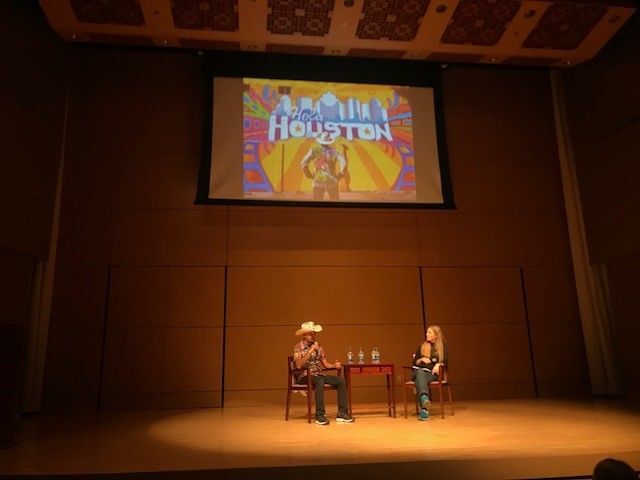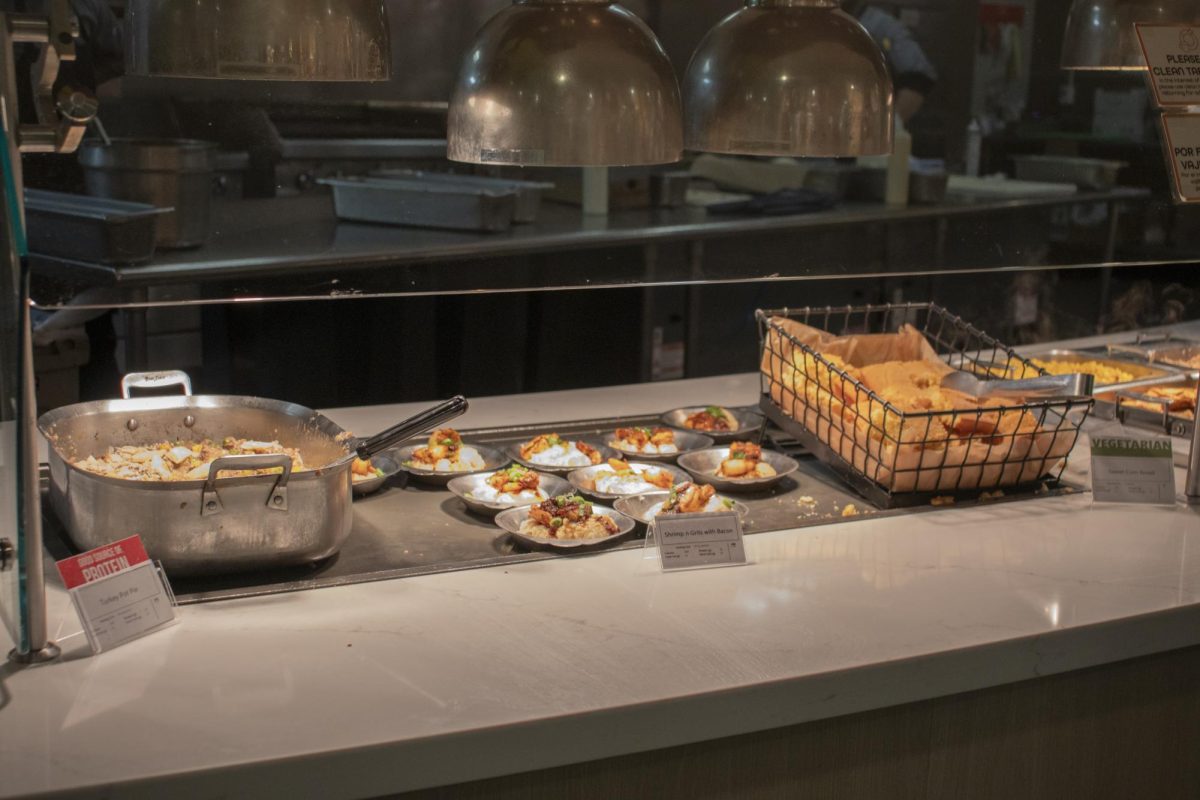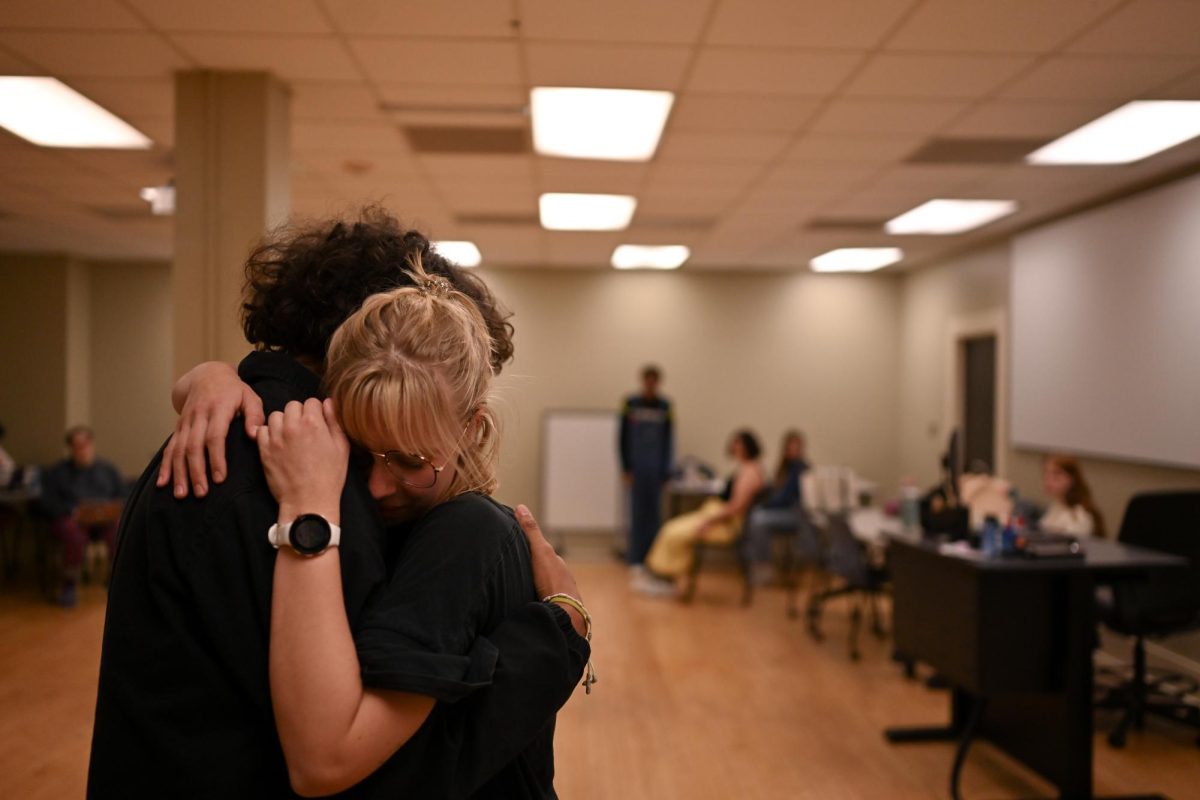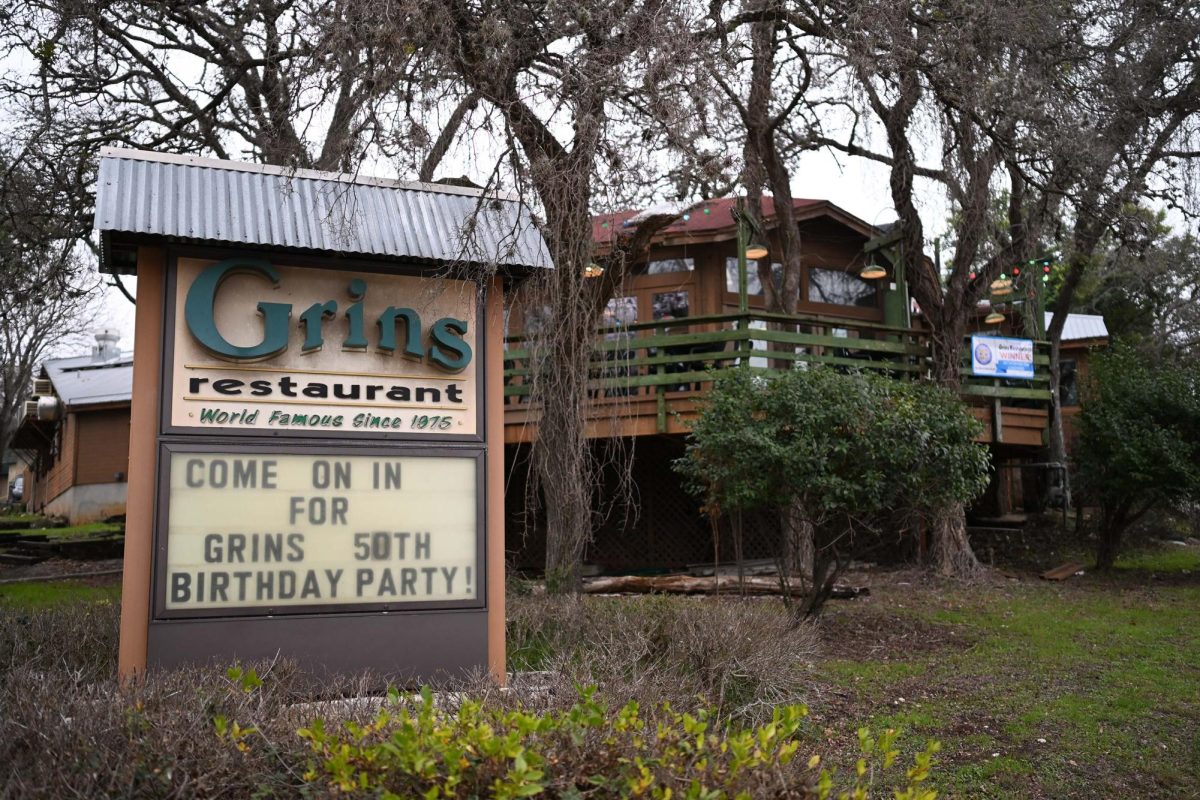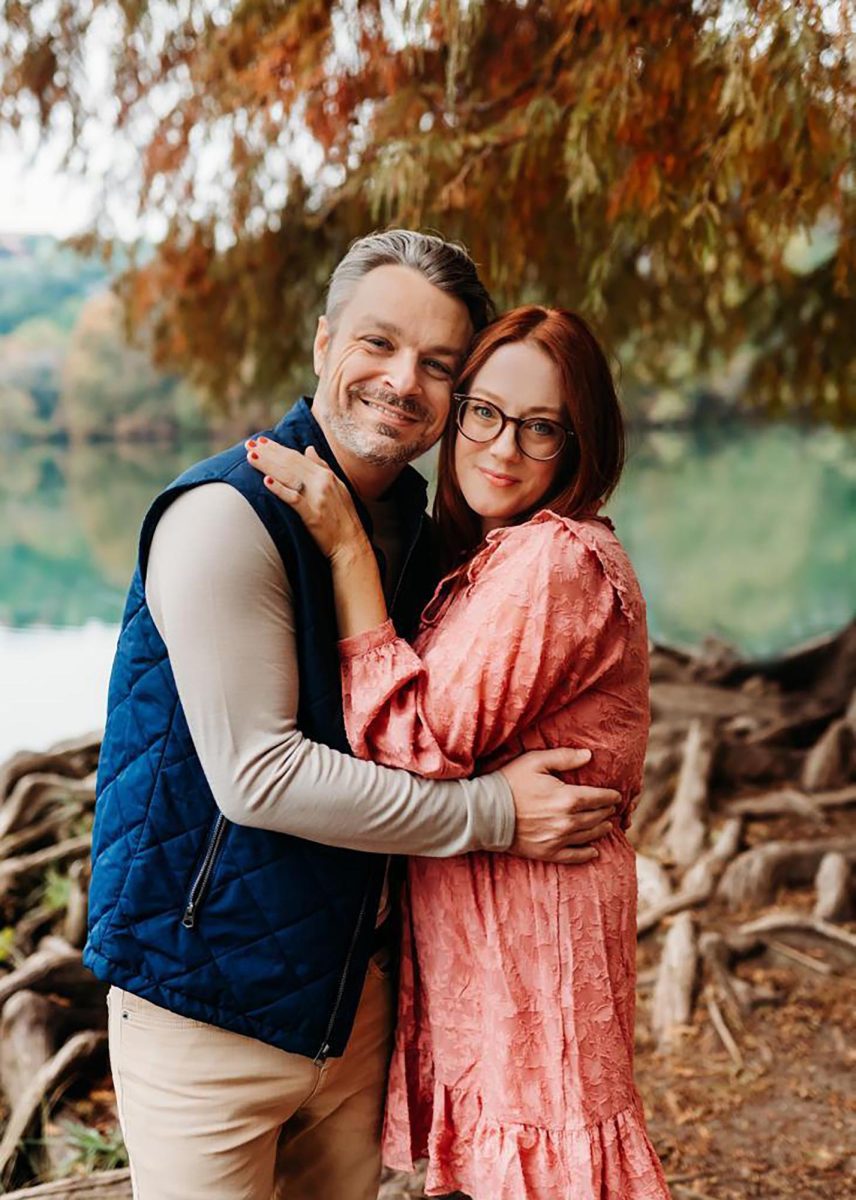The visionary who brought graffiti art to the Houston mainstream visited Texas State to tell of his trials, tribulations and journey.
On Oct. 17 at the Performing Arts Center, Mario E. Figueroa shared his story of do-it-yourself success as a graffiti artist. The event was a part of the Common Experience series in partnership with the Texas Optimism Project, sponsored and organized by Texas Monthly and Frost Bank.
Gonzo247 is Figueroa’s alias he adopted to sign his illegal works at the beginning of his career, and there is meaning behind the pseudonym. According to Merriam-Webster, “gonzo” means outlandishly unconventional, outrageous or extreme, and nothing says “gonzo” like turning vandalism into an internationally renowned art form.
“When I read the definition, I identified with it,” Figueroa said. “It describes me as a person and the art I was creating.”
Eunice Quiroz, wildlife biology freshman, said she was inspired by Figueroa’s bold ambition to pursue an artistic career.
“My parents asked if I was sure about (what I wanted to do), and I said I wanted to be an artist,” Quiroz said.
As a young adult, Figueroa said he had dreams to be an artist. However, graffiti was not respected as an art form, much less a career.
Figueroa said he found graffiti art through hip-hop. In his early twenties, after his mother’s passing, Figueroa quit his day job at a bank to pursue his passion. He became a graffiti artist in East Houston, where he documented and networked his content with other creators.
His documentation of work with other graffiti artists became a two-hour long video titled, “Aerosol Warfare,” which accumulated international attention. Now, in his mid-forties, Figueroa is the founder of his own company, Aerosol Warfare, which evolved from a graffiti crew to a magazine to now a studio and agency that facilitates graffiti art commissions.
“When I first started in Houston, I took (doing graffiti) as a personal challenge to see what I could do to foster the movement or to inspire others to follow in the footsteps of bringing culture to the city,” Figueroa said.
His impact on the legitimization of graffiti as an art form began with his transition from late-night covert operations on subway cars to openly networking with curators and other artists to embrace the craft. He now has a working relationship with Houston’s Visitors and Conventions Bureau as a street art ambassador, as well as “Visit Houston,” an agency to promote tourism and further establish Houston’s art scene.
Figueroa recently returned from Houston’s sister city: Stravanger, Norway. There, he did a mural which he described as a mashup of the two cities’ cultures to open up dialogue between the cities and cross promote tourism. He is the founder of The Graffiti and Street Art Museum of Texas.
Haley Elander, event producer, does contract work on event production for Texas Monthly.
“We’re really excited for him to come and focus in on optimism and how he was able to power through,” Elander said. “Everything that he’s doing has been so innovative. The negative connotation of graffiti completely changed within his career as an artist.”
The discussion featuring Figueroa is part of a college speaker series within the Texas Optimism Project, which will return to Texas State in December for an event called “Unwind Before the Grind.” The project’s goal is to spread joy, and will include good news emails and a “thirty days of optimism” challenge.
The conversation was an opportunity for an artist to share personal adversities and how he reached success, in hopes to inspire a generation of optimistic and innovative Texans.
Categories:
Graffiti artist joins the conversation of optimism and innovation
October 20, 2018
0
Donate to The University Star
Your donation will support the student journalists of Texas State University. Your contribution will allow us to purchase equipment and cover our annual website hosting costs.
More to Discover


